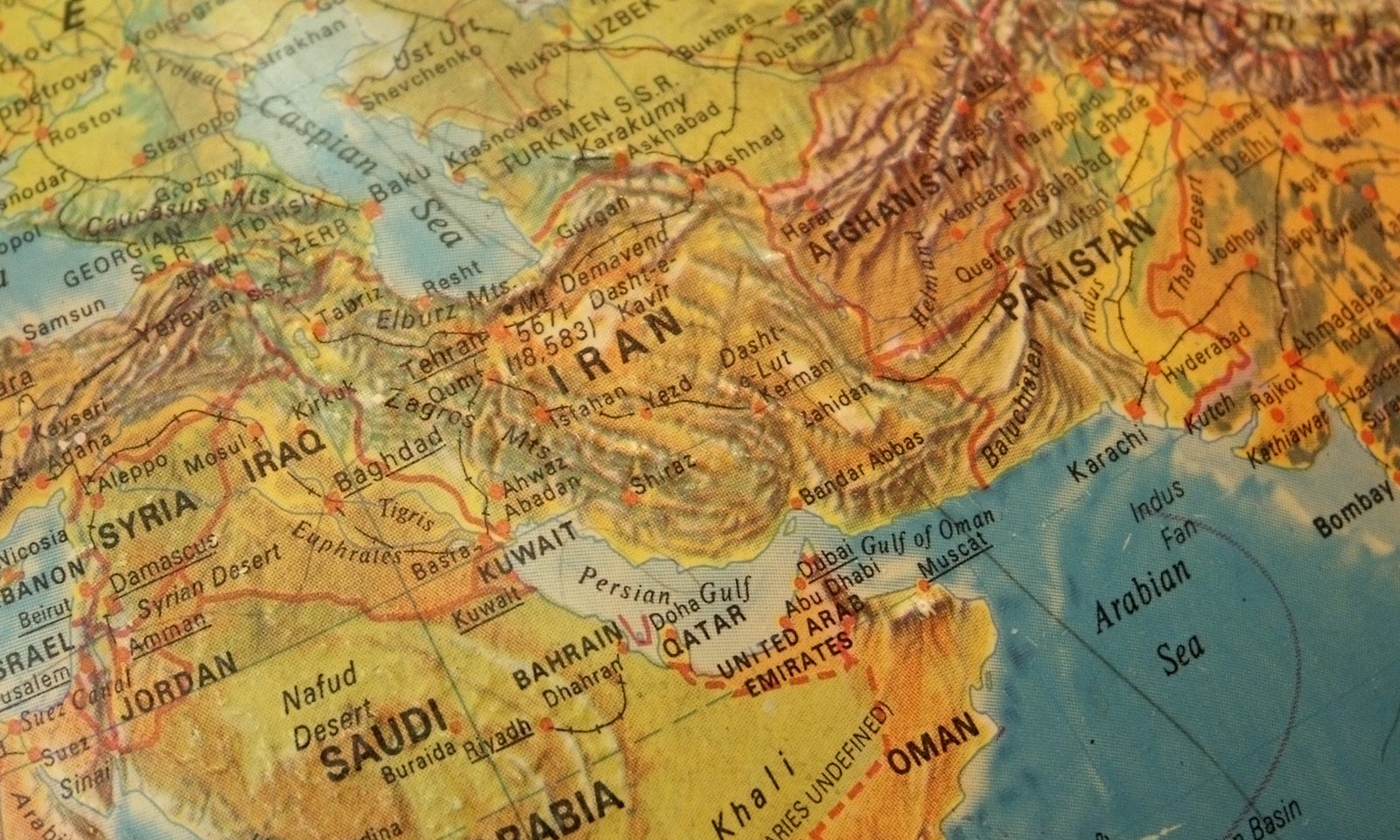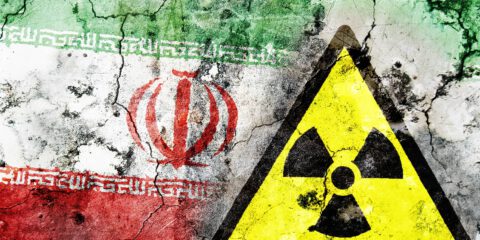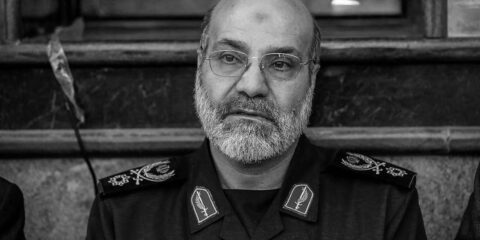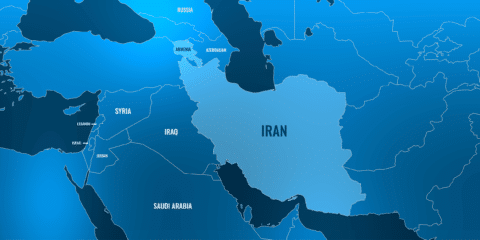A few seemingly unrelated incidents that took place across the Middle East this week all seem to point out that much of the regional unrest can be traced back to Iran, which is backing Shiite forces from Pakistan to Syria. That is unlikely to change.
This week, a few supposedly unrelated events took place, but when examined more carefully indicate that the storms engulfing the Middle East will continue.
On one side of the region, in Lebanon, Prime Minister Saad Hariri resigned after fleeing to Saudi Arabia. It is being said that he did so at the last minute to escape being assassinated by Hezbollah like his father, former Prime Minister Rafik Hariri. Some accused Saudi Arabia of pressuring him into resigning. Whatever the reason, his resignation exposed the reality that is familiar to Israel but ignored by the world: that Hezbollah is in charge in Lebanon.
On paper, Lebanon is a member of the U.N., but from almost every practical perspective there is no “Lebanese state.” True, Lebanon has a constitution, according to which the country is theoretically run, but when it comes to important matters, it’s not the administration or the parliament that decides – it’s Hezbollah.
Hezbollah is the strongest military organization in Lebanon, so it can impose its will on the rest of the population. Not only that, it also has a strong influence on the Lebanese army, which is supposed to serve as a counterbalance to Hezbollah. But the Lebanese reality is that there is no chance that the state military will confront the Shiite organization.
On the Syrian Golan Heights, a near-drama played out when it appeared that rebel forces were threatening the Druze village of Hader, which has remained loyal to Syrian President Bashar Assad and a few of whose residents appear to have cooperated with Hezbollah against Israel, in the north of that sector. The Druze on the Israeli side of the border fence could not stay quiet and threatened to breach the border to help their brethren. Similar voices were heard among Israeli Druze, too. The IDF carried out a cautious intervention that prevented a mass slaughter, but the issue has not been clearly resolved. The incident serves as a reminder that despite Russian attempts to reach a cease-fire in the Syrian war, and despite the fact that the rebels are losing strength as a result of the deal Assad struck with the Russians and the Iranians, the embers of the fire are still alight. The rebels are not finished, even though strategically, their fate appears to be sealed.
Meanwhile, a tough battle is going on behind closed doors in Saudi Arabia, where Hariri fled. Some of it came to light this week. Some believed that the generational changing of the guard in the palace – from the sons of the founder of the dynasty to the grandsons – would not happen peacefully. Right now, that prediction seems to be coming true. The arrest of senior members of the Saudi royal family is an unusual occurrence that points to internal unrest. Dictatorial countries have recently developed a method of getting rid of opponents in the guise of battling corruption, which is rampant.
Regardless of the internal power struggles, a missile was fired from Yemen at the Saudi capital of Riyadh. That tactical incident points to a strategic problem: Saudi Arabia has thus far failed in its war against the Houthi and their Iranian allies in Yemen. The failure in Yemen, right next door, has an effect on the kingdom’s security, while the failure in Syria, far from the borders of Saudi Arabia, is a reminder of the broad-scale struggle against Iran, in which Saudi Arabia is also not having much success.
Saudi Arabia is at a crossroads. The hope for positive change, led by Crown Prince Mohammed bin Salman, is great. But at the same time, the challenges in and beyond Saudi Arabia are raising plenty of question marks about the kingdom’s ability to keep existing in the same manner as it has since it was founded, namely as an alliance between the Saudi family and the conservative Wahabi strain of Islam.
Closer to home, in Gaza, the Islamic Jihad built its first attack tunnel into Israel, which Israel discovered and blew up. The organization lost a few of its commanders and threatened a response, but none was forthcoming in the first week after the incident. The event itself and what followed indicate that the quiet from the Gaza Strip is not the result of terrorist organizations no longer wanting to attack Israel. They continue to build up their forces and when the order comes, the groups will execute their plans to shoot at Israel. However, Gaza understands very well that it will pay a heavy price for any clash with Israel. This is the most vital component of Israeli deterrence, with no disrespect to the pressure from Egypt and Hamas’ desire to implement its reconciliation deal with the Palestinian Authority.
The events in Syria and Gaza bear the hallmarks of the long arm of Iran, which – as the entity in control of Hezbollah – is in charge in Lebanon. Hariri fled to Saudi Arabia because of Iran’s actions and intentions. Iran has brought in armed militias from across the Shiite world – many more than the numbers of Sunnis who have joined the Islamic State – and Hariri apparently understood that after Iran, with help from Russia, managed to set up shop in Syria, it would do the same in Lebanon. Iran also established the Islamic Jihad, although it maintains less control over that group than it does over Hezbollah, and Islamic Jihad is Iran’s main tool in Gaza.
The fact that thus far, the Islamic Jihad has not responded to the massive blow Israel dealt it, shows how strong Hamas is – much stronger than the other Gaza groups. However, the tunnel being dug at all, and the fact that part of it reached Israel, prove that the Islamic Jihad under Hamas has acquired capabilities it did not have in the past. It is important to remember that after the Egyptian success in forcing the PA into Gaza as a civilian “landlord.”
All these incidents bring some truths that influence events in the Middle East to the surface. It might be unclear how the region will look a few years from now, but we can assume that Iran will continue to be a dynamic power. Iran will continue to build its base of power in Syria, and Israel’s response will make it clear what status it will achieve there, and whether it will continue to build bases for itself and for Hezbollah in Syria.
There is also the question of the deployment of thousands of militia fighters, who became a more important element in Syria the more difficult the regime and its allies found it to wipe out the opposition forces. It would come as no surprise if a large militia contingent moved to Lebanon and changed the balance of power against Israel, as well as the proportional power of the Shiite group in the fraying fabric of Lebanon.
There is another interesting question: Will the crown prince manage to solidify his status, get rid of elements that oppose his being named king, and bring the changes he announced to Saudi Arabia? His abilities in internal matters will affect his strength in foreign affairs. The results of the battle between Saudi Arabia, which wants to lead the Sunni Arabs, and Iran, which leads the Shiites throughout the region (and is now setting its sights to the east, to Pakistan and Afghanistan, where some of the militias were recruited), will to a large extent decide the future of the Middle East.
Published in Israel Hayom, November 10, 2017
Photo: Bigstock
JISS Policy Papers are published through the generosity of the Greg Rosshandler Family.









 - בניית אתרים
- בניית אתרים